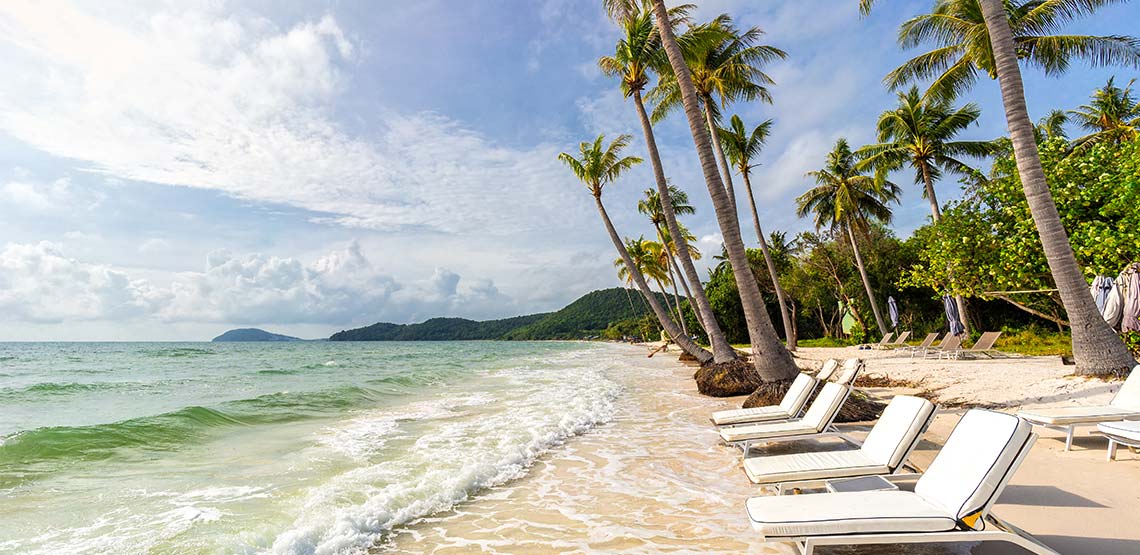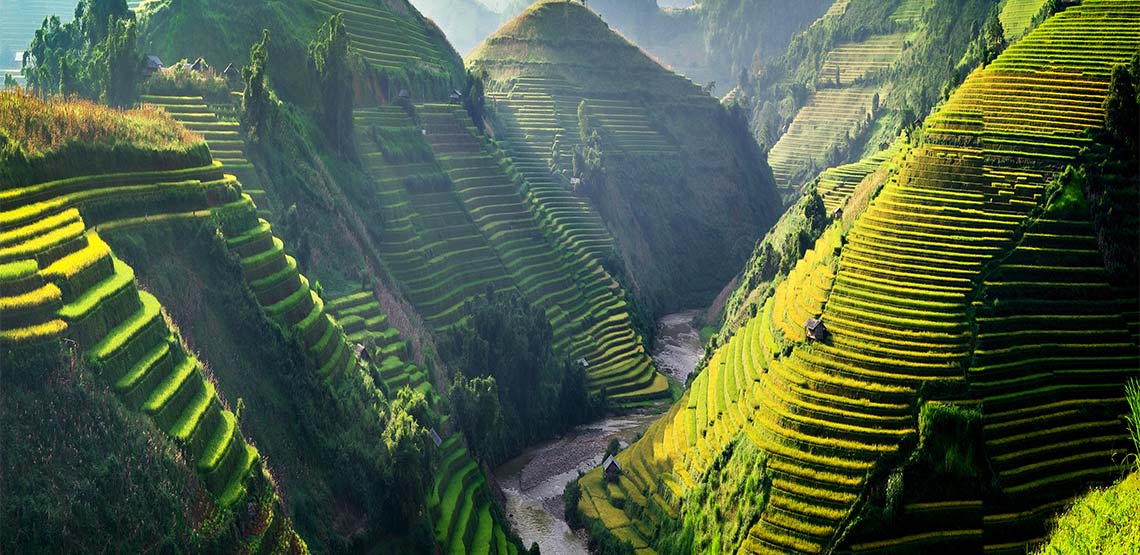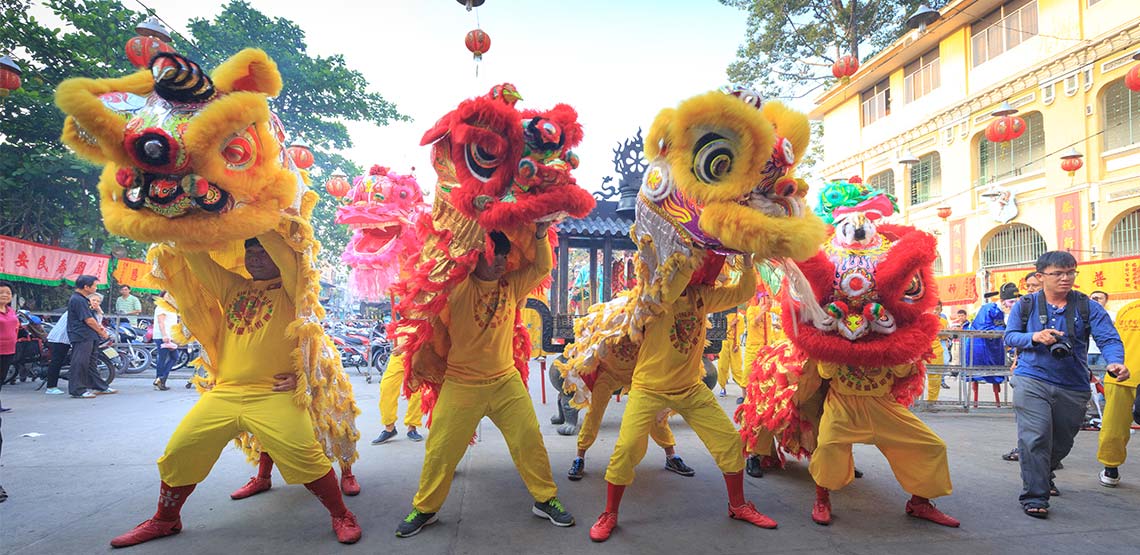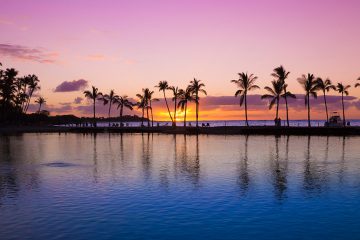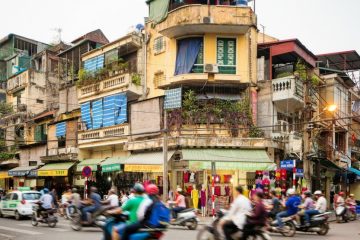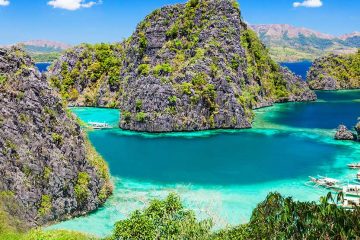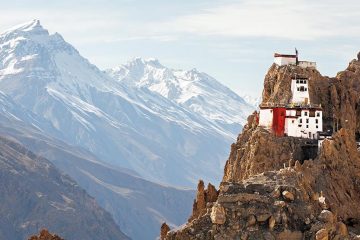Vietnam Travel Guide: From Sunny Beaches to Dark Historical Reminders
Explore Beautiful Scenery, Historic Landmarks & Delicious Food
Vietnam is a beautiful Southeast Asian country known for beaches, rivers, Buddhist temples, bustling cities, French-colonial landmarks and Vietnamese War relics. The country is stunning from end to end and the food is incredibly delicious.
There’s much to offer travelers from museums and historical sites dedicated to the country’s dark history of war, colonialism and communism to lush mountains, golden sandy beaches and rapidly growing, modern cities.
The country’s long, skinny shape lends itself to being traveled from north to south or south to north, but if you are short on time it’s often ideal to pick one area and explore locally as the country is best traveled at a slow pace. Here’s how to make the most of Vietnam travel.
Best Cities to Visit
Ho Chi Minh City
Vietnam’s largest, most modern city has a number of French-colonial landmarks and is home to the War Remnants Museum.
Hanoi
The bustling capital city with amazing street food, market shopping and a massive mausoleum built in honor of Ho Chi Minh, the country’s iconic communist leader.
Hoi An
One of the oldest seaside towns in Vietnam and a UNESCO World Heritage Site.
Ha Long Bay
Famous for its emerald waters and thousand of islands, a junk cruise here is a highlight of many visits.
Sapa
A mountainous town characterized by terraced rice fields. Sapa is a popular trekking base and gateway to hill tribe villages.
Hue
Former home of Vietnamese emperors featuring a historic royal palace.
Phu Quoc Island
Beautiful island in the Gulf of Thailand with white-sand beaches, mountains, dense jungle and world-class resorts.
What Time of Year to Go
Since the country is so long from north to south, it has several climate zones meaning that almost no particular season is best overall. Both autumn (September to December) and spring (March to April) are the best times to visit if you are planning to travel the whole country.
However, if you are focusing on a specific region you will want to check the weather for that specific area to have a clearer picture of what to expect.
What to Know Before You Go
- Tet (Vietnamese Lunar New Year) is the busiest and most exciting time to visit Vietnam. Come during Tet and experience a unique festival, but be prepared to fight the crowds virtually everywhere you go.
- Tropical diseases such as dengue fever, malaria and Japanese Encephilitis are endemic in rural Vietnam. Carry mosquito repellent, especially if planning to visit the countryside.
- Do not drink tap water, ever. Bottled water and factory-made ice are generally safe.
General Cost
Vietnam is certainly a country where you can travel on the cheap. Those looking to budget will have plenty of options here. In fact, a month’s stay can start as low as $250 USD if you travel as cheaply as possible. Buses are very low-cost and domestic flights are affordable as well.
However, if luxury is more your thing, you will find world-class resorts in cities, popular seaside towns and rural destinations. Prices may be advertised in dollars but payment is typically only accepted in local currency, dong, and it is recommended to exchange any leftovers before leaving as it is often hard to get rid of outside of Vietnam.
There's no better way to take the stress out of the holidays than by doing a beach Christmas. Your warm and sandy oasis is waiting for you!
Things to Do in Vietnam
Museums
- War Remnants Museum: Memorial museum with photographs, weapons and other objects from the Vietnamese War. This is an incredibly interesting place to visit as an American.
- Hoa Lo Prison: The famous POW prison from the Vietnam War, otherwise known as the “Hanoi Hilton.” The gatehouse is a museum today. It’s one of the many interesting things to do in Hanoi.
- Vietnamese Women’s Museum: A well-done and interesting museum dedicated to Vietnamese women.
- Cu Chi Tunnels: A massive underground tunnel complex that was used by Viet Cong Soldiers. Now a memorial site with exhibits.
Beaches
Some of the most popular beaches can be found on islands such as Phu Quoc and Con Dao, a group of islands known for their sandy beaches, marine life and coral reefs. Hoi An, Nha Trang and Mui Ne are also popular beach areas.
Shopping
All of the big cities have great market shopping, but the Hanoi Old Quarter is my absolute favorite. If you are looking to have clothes made, Hoi An is famous for its tailors and you will find many in the area who can create any look you are hoping for.
Nightlife
There are plenty of clubs and bars in the big cities and popular backpacker destinations around the country. Apocalypse Now in Ho Chi Minh City is one of the most popular clubs and as such will always be packed, but for good reason.
Even though Hanoi has strict laws that mean most clubs close at midnight, you’ll still find places to party such as the Funky Buddha, Minh’s Jazz Club and, for a crazy time, the Seventeen Saloon.
Safety
While Vietnam is relatively safe, low-level street crimes such as pick pocketing and bag snatching occur fairly often in the large cities. You should use common street smarts and keep a close watch on your valuables. Scamming foreigners is fairly common including double pricing, overcharging, rigged taxi meters, etc.
Petty crimes in night clubs can also happen and you should be careful around intoxicated locals. Walking very late by yourself on the streets in tourist areas is often a bad idea. Yelling is incredibly insulting to the Vietnamese. Avoid losing your temper and arguing with locals. Showing general courtesy and respect to local customs and laws will go a long way.

